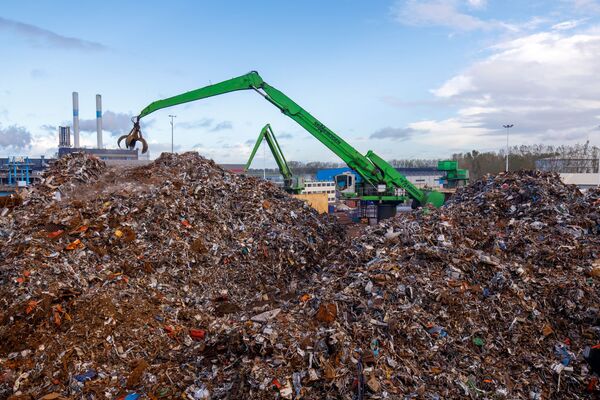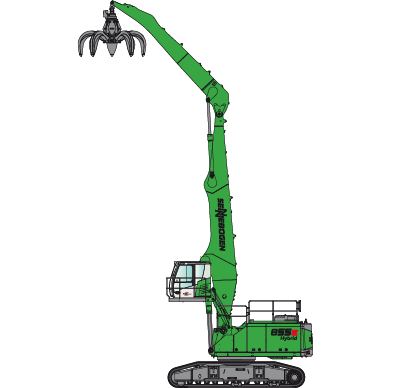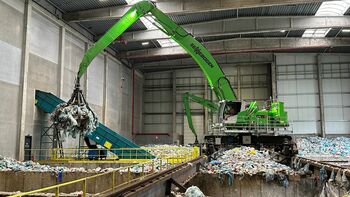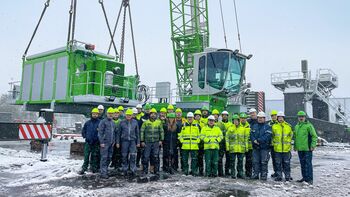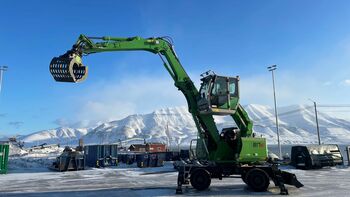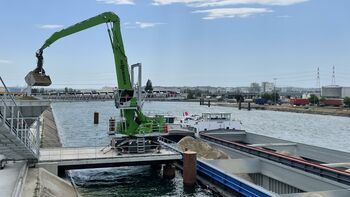Sustainability in metal recycling: Cooperation of EMR and SENNEBOGEN
The leading UK-based metal recycling company EMR has a clear vision of its sustainability strategy: achieving net-zero CO2 emissions by 2040. For more than 10 years now, eight SENNEBOGEN machines at the Rotterdam site have been supporting the company to get closer to its goal.
Sustainability as driving force behind EMR’s business strategy
Starting 70 years ago with a single UK business, EMR grew to a multinational and one of the world’s leading metal recycling corporation with over 3,000 employees and facilities across the globe, processing ferrous and non-ferrous metals as well as vehicle scrap. The company recycles 10 million tonnes of materials annually, made up of everything from drink cans to oil platforms, which are re-used, recycled and recovered into more than 200 grades of new, sustainable raw materials. To turn waste into a valuable resource, EMR works with a wide variety of business partners, including international automotive companies, government agencies, and hundreds of companies in industries such as demolition, construction, and electronics. Sustainability and the protection of the environment are always at the center of its activities. Therefore, EMR is following a sophisticated sustainable business strategy and aims for “net-zero” emissions by 2040.

The right machines for handling tons of material
The site in Rotterdam covers 50,000 m², where around 1 million tonnes of material, mainly metals and ferrous scrap, are handled annually. EMR Rotterdam employs about 50 people, 25 of whom work in two shifts on the scrap yard. In 2013, the first SENNEBOGEN machine was put into operation. Nowadays, there are eight SENNEBOGEN machines in use to control the business processes at the metal recycling yard, including six balance material handlers and two 855 E Hybrid port material handlers which were delivered and commissioned by the sales and service partner SMT Netherlands. With sustainability in mind and as one of the first metal recycling companies, EMR decided to integrate electrically powered machines into its fleet. Therefore, two of the balance material handlers on the yard run fully electric. The various tasks of the machines range from transportation of scrap parcels on the yard, to loading scrap shears and most importantly loading and unloading ships and barges at the docks. The machines run 20 to 24 hours a day to load and unload ships with a capacity of up to 50,000 tonnes arriving from all corners of the world. For that, a high degree of flexibility and coordination is required at the scrap yard: “No two days are the same here and you never know what's going to come your way. One week we load one large ship, the next week there are twenty smaller ones to load or discharge. Often the route plans of the ships change and we have to react quickly," yard manager Edwin van der Heiden explains. The loading and unloading time is determined by various factors such as the size and capacity of the vessel as well as the height and weight of the cargo. Therefore, the time required for loading the material ranges between 150 and 500 tonnes per hour. A large ship can thus be loaded within 3 to 4 days.

Particularly robust machines for continuous operation in the port of Rotterdam
In order to be able to withstand not only the demanding continuous operation but also the iron dust and the strong vibrations caused by the work with ferrous scrap, the company needs especially robust machines. Therefore, the SENNEBOGEN machines are the perfect solution that not only fulfil the challenging requirements at the scrap yard, but also meet the company’s core values like sustainability. Due to the balancer principle the weight is distributed evenly - this allows even particularly heavy loads to be moved in large operating ranges with enormous energy savings. Equipped with an easily accessible electric motor, maintenance work is not only simpler but also takes place much less frequently: „There are almost no breakdowns with the electric motor. If something happens, we don't have to wait for days for the spare parts delivery, but can continue with the work after 2 hours at the latest“. In addition to the easy access to the engine compartment and the simple and intuitive operation, the machine also convinces with its natural and flowing movements as well as the fast reaction time. The yard manager is also impressed with the reach and the load capacity: „With the balance material handlers, we can also load and unload ships with a higher draught, which previously did not work well with other machines. The cabin also contributes significantly to this since the optimal view eliminates any blind spots.”
Various attachments for efficient scrap processing
In addition to the balancer machines, two 855 E Hybrid material handlers with mobile undercarriages are also in use on the scrap yard. Thanks to the special handling equipment, the machines can serve a wide variety of tasks with various attachments such as the sorting grab, rail cutter or scrap shear and thus take on a multifunctional role on the scrap yard. Due to the sophisticated Green Hybrid energy recovery system, this is done in a particularly efficient way. When lowering the boom, the system stores the energy and makes it available for the next lift with hardly any loss, reducing operating costs by up to 30%.
Besides all the technical features, Edwin van der Heiden values the personal contact and close cooperation with SENNEBOGEN: „We can pass on feedback from our operators directly to all levels at SENNEBOGEN and it will often be included in the further development. You can tell that the needs of the customers are top priority. This kind of cooperation is quite unique“.
Machine in use
Press images
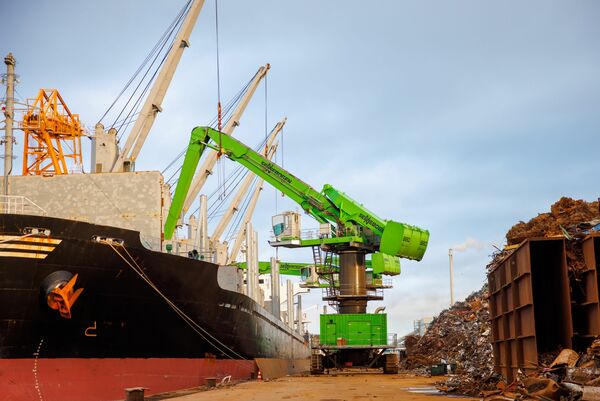
Press images
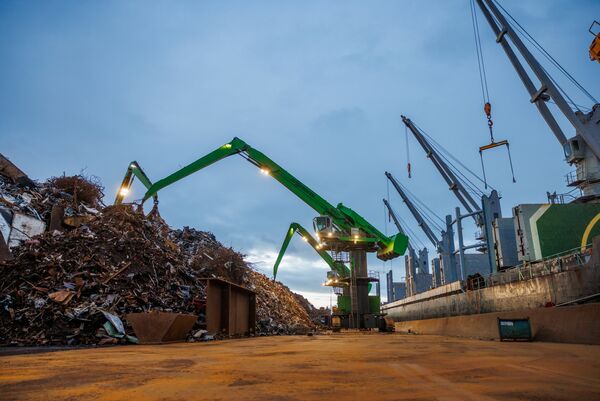
Press images
